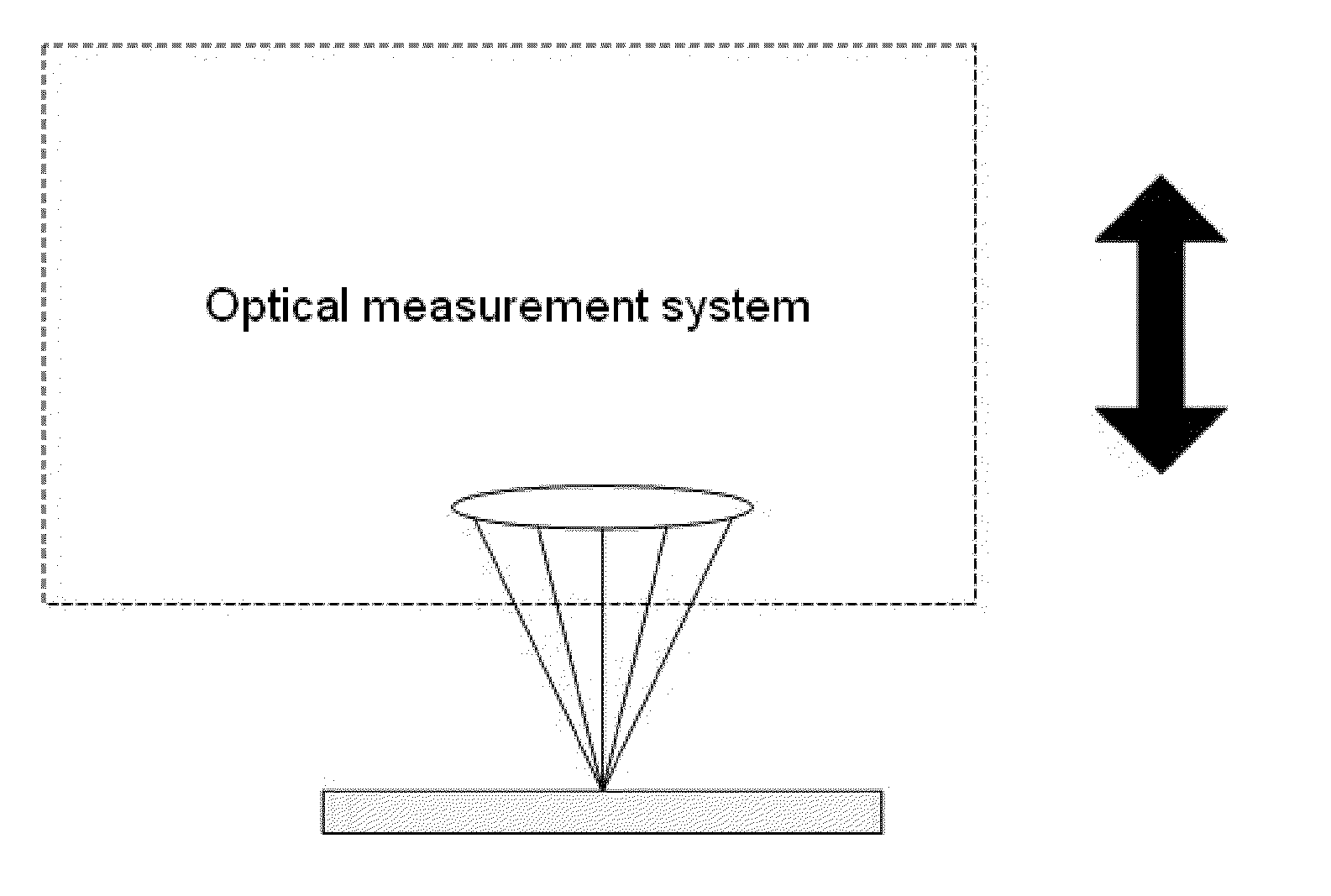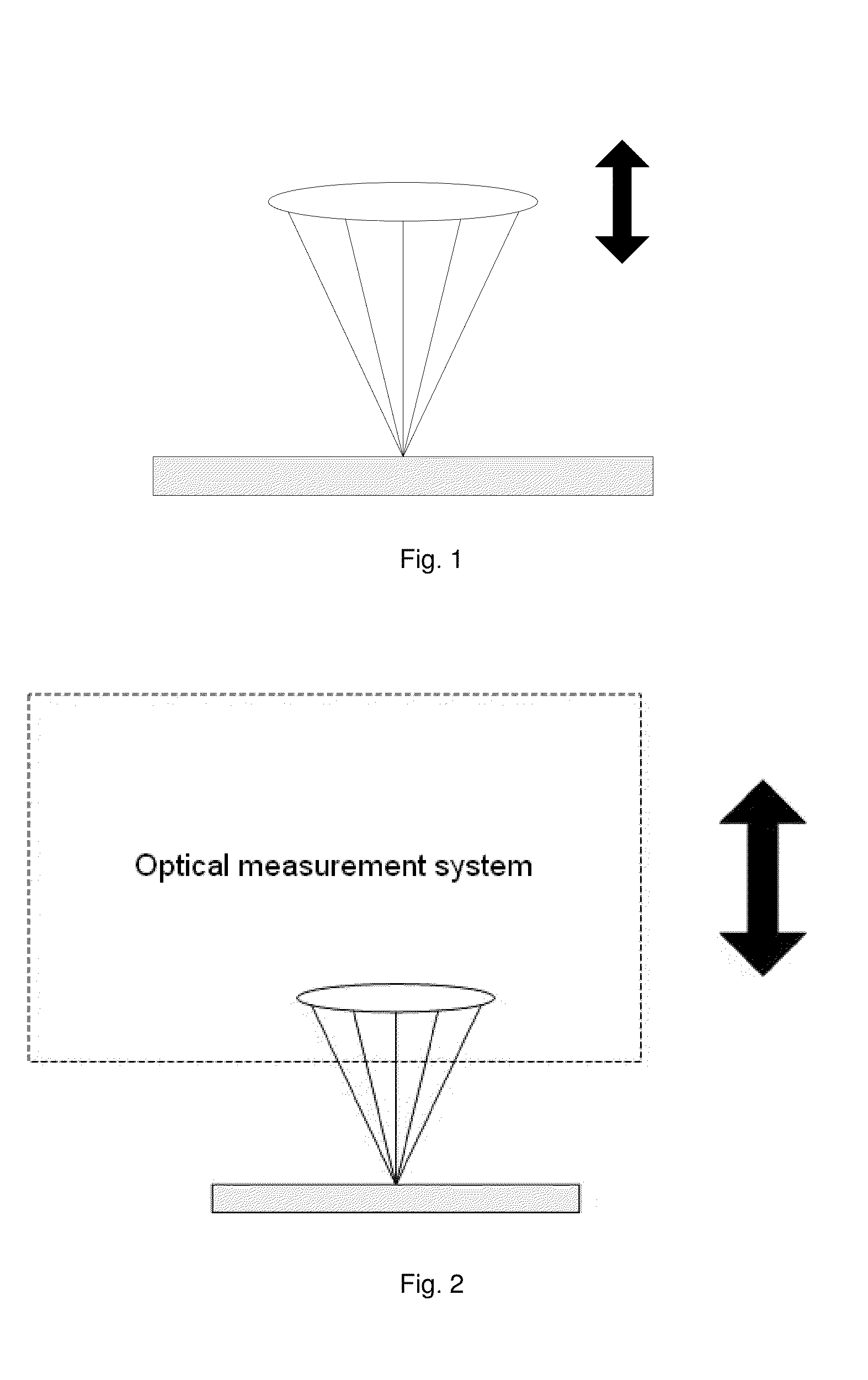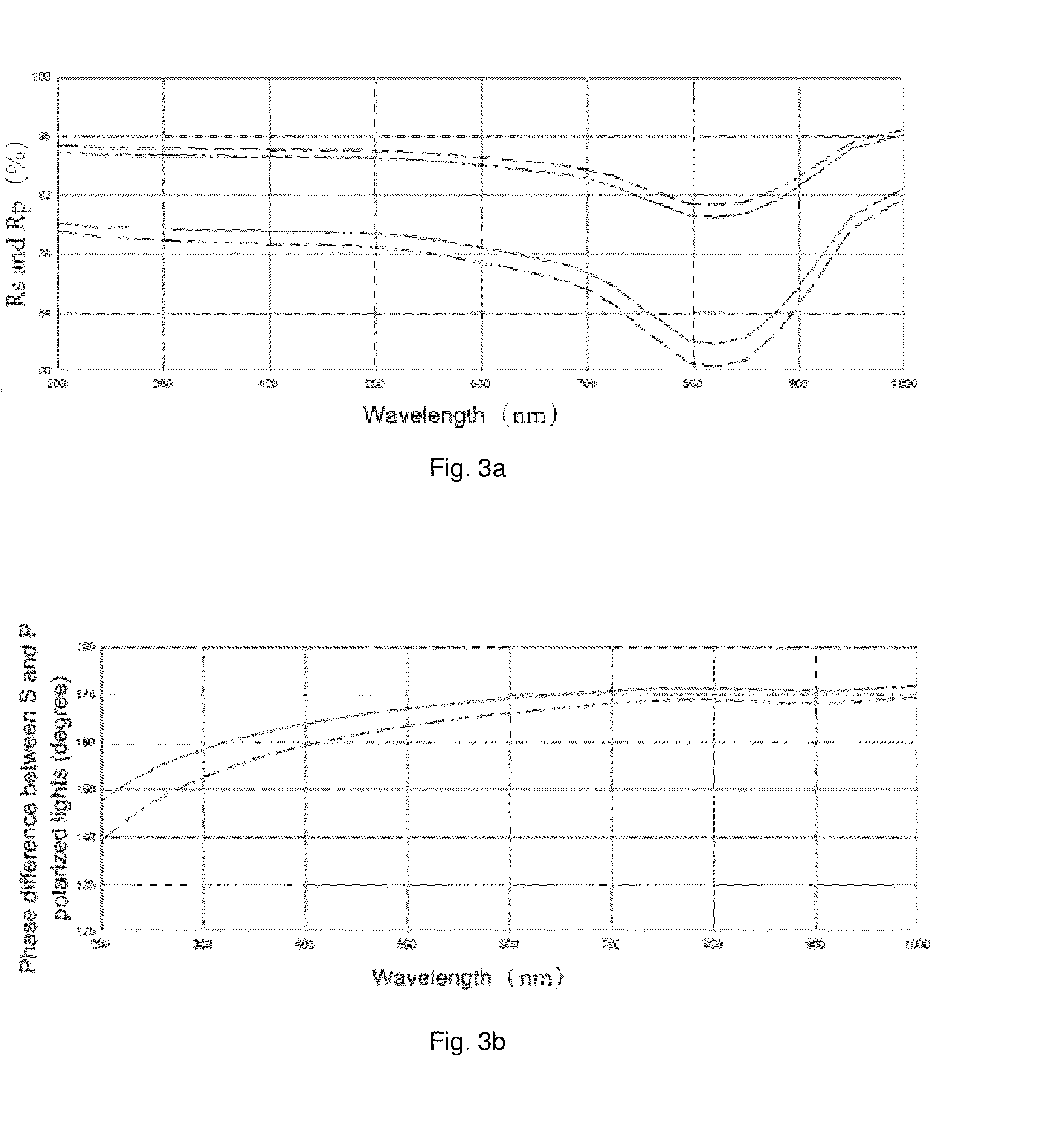Normal-incidence broadband spectroscopic polarimeter containing reference beam and optical measurement system
- Summary
- Abstract
- Description
- Claims
- Application Information
AI Technical Summary
Benefits of technology
Problems solved by technology
Method used
Image
Examples
embodiment i
[0084]A normal-incidence broadband spectroscopic polarimeter according to the first embodiment of the invention is shown in FIG. 14a. As shown in FIG. 14a, the normal-incidence broadband spectroscopic polarimeter includes a broadband spot light source SO, a first reflecting unit (including planar mirrors M4 and M5), a moveable light blocking plate D, an aperture A, a first concentrating unit (an off-axis parabolic mirror OAP2), a polarizer P, a first off-axis parabolic mirror OAP1, a first planar mirror M1, a second concentrating unit (lens L), a second reflecting unit (including planar mirrors M2 and M3), a broadband spectrometer SP, a movable beam splitting plate BS (refer to FIG. 14b for specific position thereof) and a pattern recognition system IRS. The pattern recognition system IRS includes a lens L′, an illumination light source (not shown) and a CCD imager (not shown). The broadband spot light source SO can emit divergent beam containing a broadband spectrum. The broadband ...
embodiment ii
[0101]An optical path diagram of normal-incidence broadband spectroscopic polarimeter according to the second embodiment of the invention is shown in FIG. 16. The optical path element and measurement method of the embodiment are substantially the same as the normal-incidence broadband spectroscopic polarimeter with double beam according to the first embodiment of the invention, but the optical path characteristics are slightly different. For simplicity, only the optical path is described briefly.
[0102]The beam emitted from the broadband spot light source SO is reflected by the curved mirror M6 to form a focused beam. The first reflecting unit, i.e., the planar mirrors M4 and M5, splits the beam into a probing beam and a reference beam. The second reflecting unit, i.e., the planar mirrors M2 and M3, combines the probing beam and the reference beam returned from the sample surface into a beam, then makes it incident on the same spectrometer SP. Unlike the first embodiment, the beam re...
embodiment iii
[0107]A normal-incidence broadband spectroscopic polarimeter containing reference beam according to the third embodiment of the invention is shown in FIG. 17. The optical path element and measurement method of the embodiment are substantially the same as the first embodiment and the second embodiment. For simplicity, only the optical path of the embodiment is described briefly.
[0108]As shown in FIG. 17, the beam emitted from the broadband spot light source SO passes through the curved mirror M6 and is split into two beams by the planar mirrors M5 and M6, one of which is a probing beam, and the other is a reference beam. The probing beam passes through the aperture A, the off-axis parabolic mirror OAP2, and the polarizer P, then is incident on the sample surface perpendicularly after incident on the off-axis parabolic mirror OAP1 and being reflected by the planar mirror M1. The probing beam reflected by the sample surface passes through the off-axis parabolic mirror OAP1, the polariz...
PUM
 Login to View More
Login to View More Abstract
Description
Claims
Application Information
 Login to View More
Login to View More - R&D
- Intellectual Property
- Life Sciences
- Materials
- Tech Scout
- Unparalleled Data Quality
- Higher Quality Content
- 60% Fewer Hallucinations
Browse by: Latest US Patents, China's latest patents, Technical Efficacy Thesaurus, Application Domain, Technology Topic, Popular Technical Reports.
© 2025 PatSnap. All rights reserved.Legal|Privacy policy|Modern Slavery Act Transparency Statement|Sitemap|About US| Contact US: help@patsnap.com



